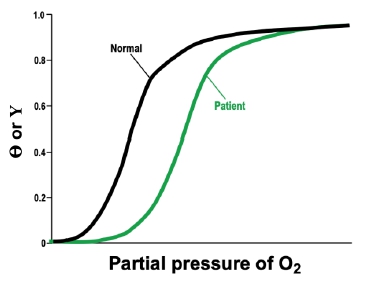23-bisphosphoglycerate (BPG) is a crucial molecule that influences hemoglobin's ability to bind oxygen. BPG contains two phosphate groups, which is reflected in its name, where "bi" indicates two. Sometimes, BPG is referred to as DPG, with "di" also meaning two; however, both terms refer to the same molecule. BPG functions as an allosteric inhibitor, reducing hemoglobin's oxygen affinity in tissues, thereby facilitating the release of oxygen where it is most needed.
As an allosteric inhibitor, BPG operates similarly to carbon dioxide and protons, shifting the oxygen binding curve of hemoglobin to the right. This rightward shift indicates a decreased affinity for oxygen, allowing hemoglobin to release more oxygen into the tissues. BPG binds to hemoglobin only in its tense state (T state), which is the conformation that binds oxygen less efficiently. This binding occurs through non-covalent electrostatic interactions, stabilizing the T state and promoting oxygen release.
In the presence of BPG, the relationship between oxygenated hemoglobin and oxygen release can be expressed as follows: when BPG binds to hemoglobin, it facilitates the release of oxygen. This effect can be visualized in an oxygen saturation curve, where the presence of BPG shifts the curve to the right. The curve without BPG shows a slight sigmoidal shape, while the addition of BPG results in a more pronounced rightward shift, indicating that hemoglobin releases oxygen more readily. The more BPG present, the more significant the shift in the curve, demonstrating its role as a negative heterotrophic allosteric effector.
Understanding BPG's function is essential, as it highlights how hemoglobin's oxygen binding activity is modulated in different physiological contexts, particularly in tissues where oxygen delivery is critical.


